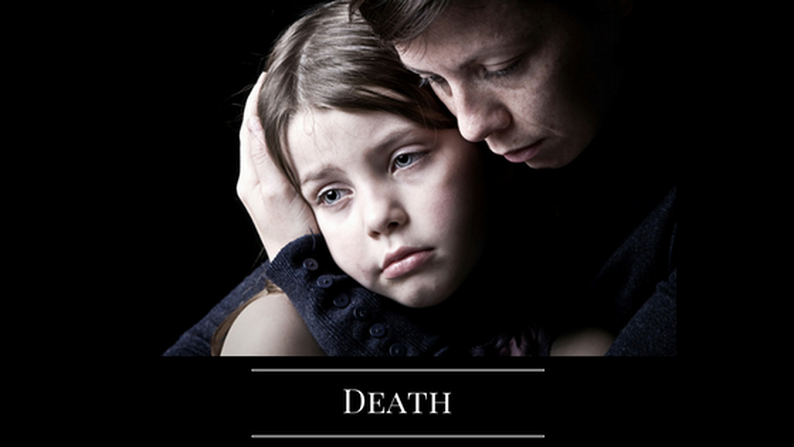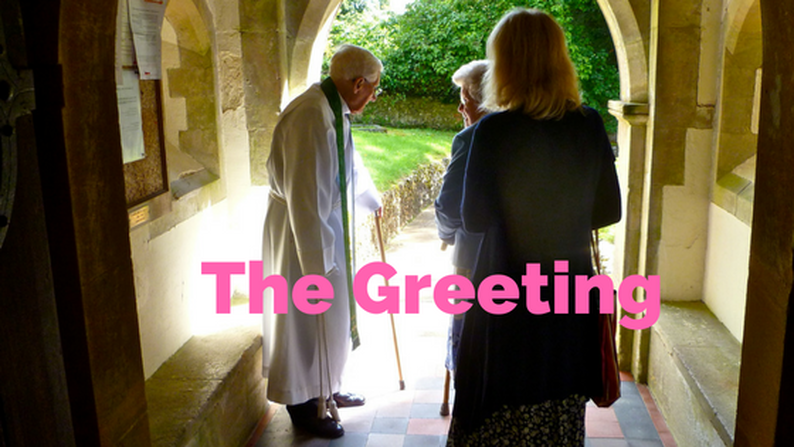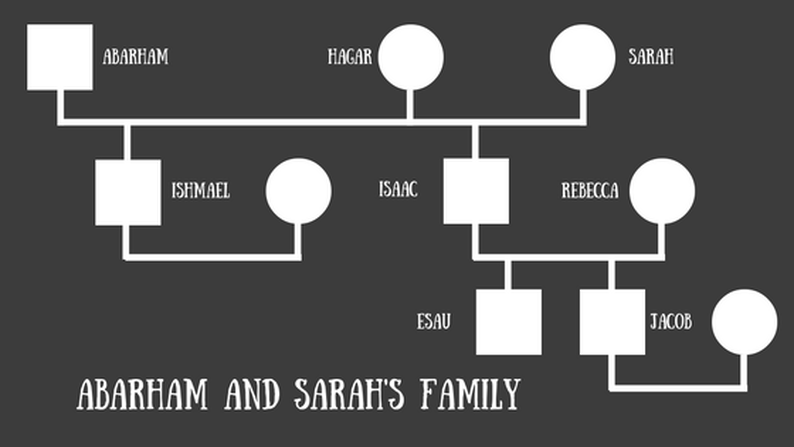creativecommons.org/licenses/by-nc-nd/2.0/
I first learned about death rituals from my family. When I was I child and someone in the congregation died, my mother would take me to the grocery store to buy food for the grieving family. At the store, she walked straight to the refrigerated section and picked out a pear-shaped tin which containing a cold, slab of ham. She’d drive me and the ham to the house of the grieving family. I typically stayed in the car and watched as she walked to the front door, knocked, and handed over the hunk of ham. At the time, I was confused as to how a lump of meat wrapped in metal could at all be comforting.
Fast forward two decades. A good friend’s mother died. I was living independently at the time, and it was the first time a close friend of mine grieved a loss. In these situations, you do what you learn from family. I stopped at the grocery store, picked out a container of ham, and went to his place. I knocked on the door and said, “I brought you ham.” He said to me, “Why?” I said, “I have no idea. This is what you are supposed to do when someone dies.”
All of us develop ways to cope with death. People of faith have rituals and practices that help us mourn someone’s death. Over the years, I’ve observed variation in how families approach death in the family. Some rise to the occasion and can pull together meaningful and memorable funeral services. However, some struggle with simply setting a date for the service. And then there is wide variation in between. Congregational leaders can play an important role in helping families prepare for the funeral.
Observing the reaction and role of the congregation to death.
How does your congregation respond to death? Are there specific people who take active roles? How involved is the congregation in the funeral planning? How does the congregation support grieving families? Does the congregation have specific rituals or practices incorporated into the visitation or service? How might leaders in the congregation take a more active role in supporting grieving families?
Good leaders think about the functioning of a congregation in response to a death and explore ways the congregation can be involved in supporting the family.
Murray Bowen on death.
Death is an anxious experience. On the one hand, it is the physical loss of a relationship. On the other, we come in contact with our mortality.
Death is a natural part of life. We are creatures with emotions and feelings. Therefore humans have a more elaborate approach to death compared to the rest of the animal kingdom. When we lean into the reality of death, with the support of family and friends, it’s possible to have better long-term outcomes for individuals and the family.
Murray Bowen wrote an entire piece called “Family Reaction to Death.” Bowen said about funerals:
I urge family members to visit dying family members whenever possible and to find some way to include children if the situation permits. I have never seen a child hurt by exposure to death. They are “hurt” only by the anxiety of survivors. I encouraged involvement of the largest possible group of extended family members, an open casket, and the most personal contact that is possible between the dead and the living, prompt obituary notices, and the notification of relatives and friends, a public funeral with the body present, and the most personal funeral service that is possible. Some funeral services are highly ritualized but it is possible to personalize even the most ritualized services. The goal is to bring the entire family system into the closest possible contact with death in the presence of the total friendship system and to lend a helping hand to the anxious people who would rather run than face a funeral. (Family Therapy in Clinical Practice, p. 332)
The rest of this blog is dedicated to thinking about the implementation of these ideas.
How to plan the funeral.
As someone who has attended and officiated many funerals, here are my thoughts for planning a funeral. I hope you’ll share in the comment section your experience and how it might be similar or different from mine.
Funeral planning is a family affair.
Every family has a leader. In most families, I can count on one person to take the lead in making arrangements. When I’m in contact with this person for the first time, I encourage them to consider including as many family members as possible in the planning of the service. Even if it is only one person planning the service, I still encourage the participation of others. Each family member has unique knowledge of the deceased through their relationship with them. Expressing the relationship through spoken word, music or other artistic expression is to everyone’s benefit. For those who struggle with including others in the planning and/or participation in the service, it indicates a higher level of anxiety in the relationship system.
As clergy, I avoid giving the eulogy or speaking on behalf of the family.
For many years, I took copious notes when meeting with the family in preparation for a sermon that would weave together the life of the person as it related to their faith journey. While studying Bowen Theory, I concluded that my effort to speak about the person on behalf of the family was robbing family members of an important opportunity. My current practice is to leave it up to the family to share stories and reflections. I do share theological reflections about death in a short sermon. If I have a relationship with the person, I will share my thinking about them. This reflection is mine and not based on the reflections of other family members.
Encourage families to spend time with the body.
As I read Bowen’s quote above, I’m struck by how little attention, over the years, I have given his thoughts about having the family spend time with the body. In fact, when services are held in the church, there is typically a brief visitation before the service, and then the casket is closed for the last time. As I write this blog piece, I am aware of how unaware I have been about when and how the casket is closed in the presence of family. I plan to spend more time thinking about when and how this can happen with more intentionality with the family. It has always been interesting to me that the casket typically remains open during the service at a funeral home, but remains closed when it is at the church. If you have thoughts about this practice, please include them below in the comment section.
The importance of communicating a death right away.
In the congregation I currently serve, we send out a notice to the congregation when the family notifies us of a death, with a follow-up email once the obituary is posted. Bowen encouraged families to write an obituary and contact family members. While every family may have someone who struggles with accepting the death, the family can play a significant role in helping the person. All of us do better in accepting death when we have the support of family, friends, and a congregation. Avoiding private ceremonies and having an open invitation to all family members and friends are important steps in this effort.
Have families participate at the graveside.
I had not thought much about this until rereading Bowen’s quote. When my paternal grandfather died, we each had an opportunity to shovel dirt into the grave. I recently officiated at a graveside where a member of the family took dirt from their country of origin and sprinkled it on top of the casket. They then sprinkled water from Israel. I was struck by the importance of these small acts of participation by family members. Moving forward, I’ll be inviting families to consider ways to participate at the graveside.
Let the children come.
I probably get asked this question more than any other. Should I bring my child to the visitation and service or leave them at home? I tell parents that their children, surrounded by the family, are able at any age to face the reality of death. The children look to the parents and family members to observe how the family reacts to death. I believe children do better long-term when they have access to what’s happening in the family and can participate in family rituals and activities related to death.
It’s important to name death.
When I first read Bowen’s paper on death several years ago, I began using more direct language about death. I noticed funeral home directors and others using words like “passed away” or “loss.” I found that using direct words helped me be less anxious and more grounded in dealing with death.
Is there anything you don’t want to do?
A couple of years ago I started asking families if there was anything they didn’t want to be said or done at the visitation, funeral, or graveside. The answers I receive tell me about people’s fears. It helps my thinking as I work with family members.
Facing death is an opportunity to continue doing the important work of differentiation of self.
As a congregational leader, you get to think about death on a regular basis. Each funeral is an opportunity to take inventory of one’s reactivity to death and dying. It’s a time to ask, “What aspects of death do I feel confident about in my thinking? What aspects am I unsure of?” It’s also been an opportunity to think about the impact of death on one’s family. “How has my family reacted to death? What deaths have had the greatest impact on the family?” As a congregational leader, sitting with families as they plan a funeral has stimulated questions and fears about death. These observations are fodder for conversations with members of my family.
For those who have the courage and motivation to lean into the experience of death and dying, a treasure-trove of opportunities to work on differentiation of self is available to the one who is a responsible self and leader in the congregation and family.





 RSS Feed
RSS Feed